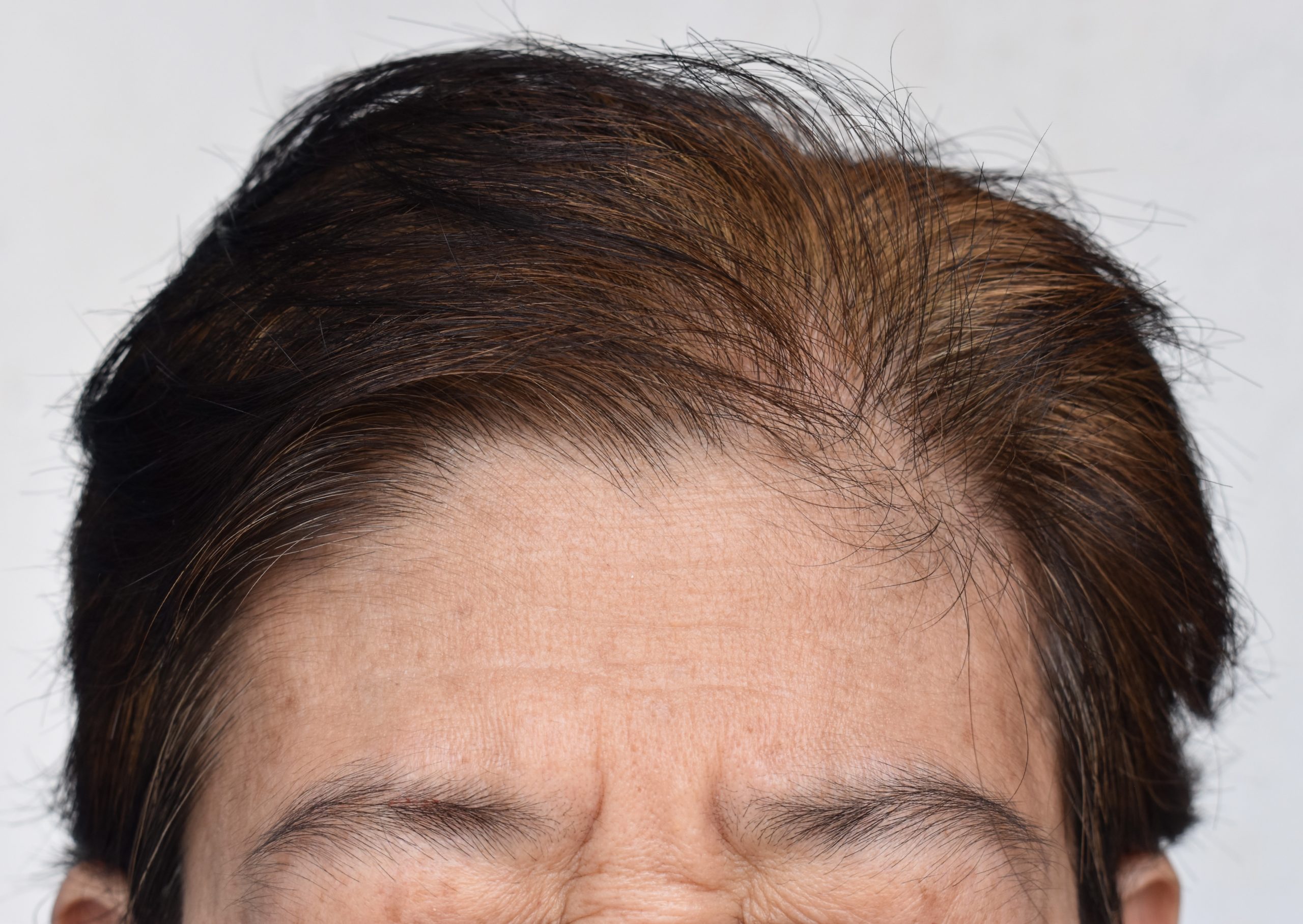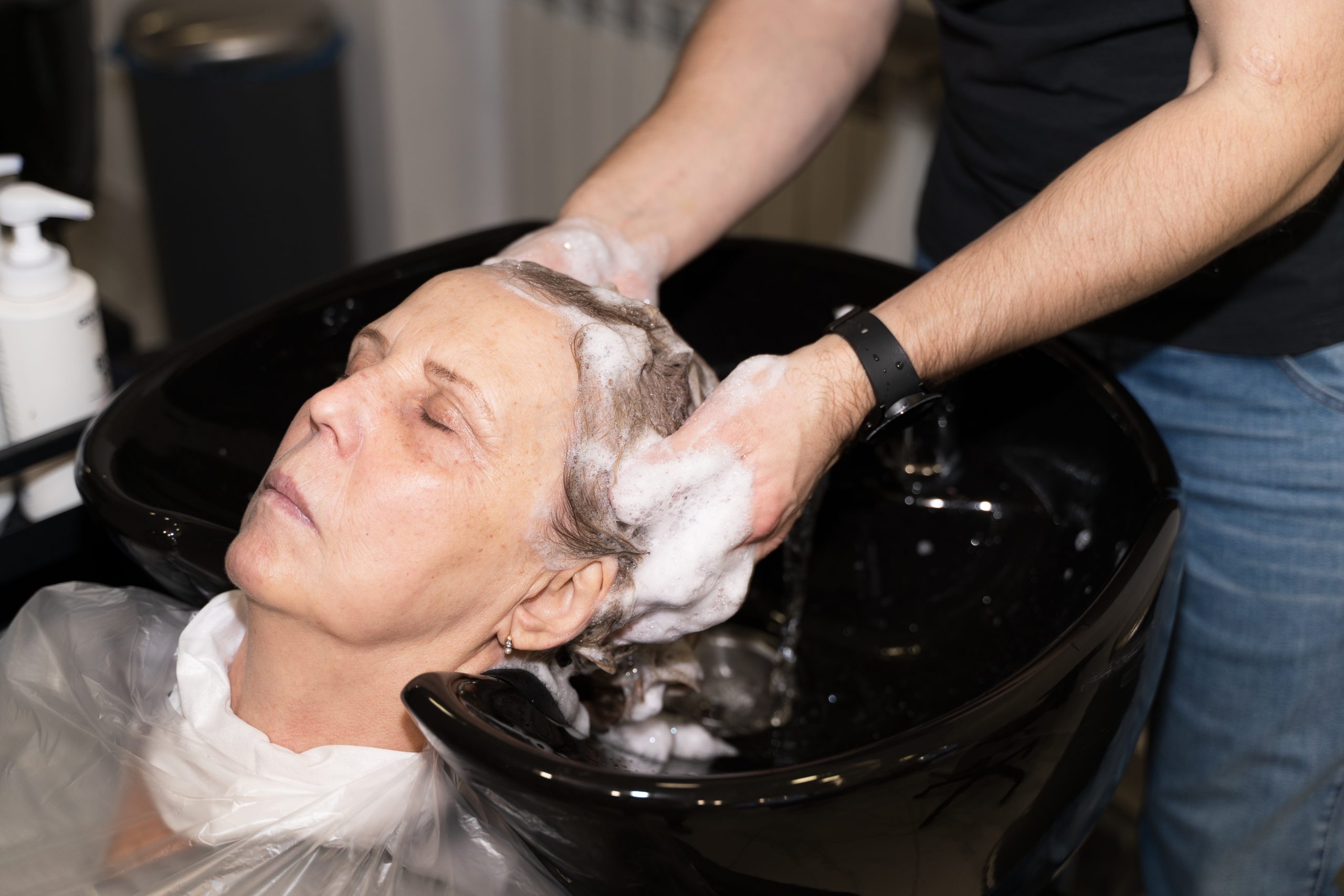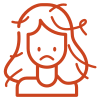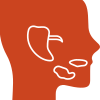Changes to Hair & Nails
Understanding Hair Loss & Thinning
Menopause Facial Hair
Brittle & Peeling Nails
Remedies for Hair Loss & Thinning
Remedies for Facial Hair
Remedies for Brittle & Peeling Nails
HAIR & NAILS
Understanding changes to your hair and nails as you age and how to treat them.
Understanding Changes to Hair & Nails?
Your hair and nails play an important role in your health, acting as protection against the outside environment and helping to regulate body temperature, but most of us pay attention to them because they are a part of our external identity – together, with our skin they define how we look. For most of us, the importance of feeling good about our hair and nails cannot be overstated, making hair products and nail care huge industries in our society.
Aging is a fact of life. While that is easy to understand, it can be difficult to experience, especially because changes to our hair and nails seem to happen suddenly. Changes in your levels of estrogen during the menopausal transition play a big role in changes to your hair and nails, because estrogen is very involved in keeping your hair and nails healthy and repairing them if they get damaged.
For women, the menopausal transition can lead to multiple symptoms affecting the skin, hair and nails. Common symptoms include:
- thinning hair/ receding hairline
- growth of facial hair
- brittle and/or peeling nails
- ridges on nails

Self-care & Natural Remedies for Hair and Nails?
There are many approaches to taking care of your hair and nails that do not require prescriptions, although you should inform your healthcare provider or dermatologist of anything that you are doing – there may be impacts on treatments that they suggest or prescribe.

Therapy & Treatment for Female Hair Loss?
At age 40 find a reliable, educated primary care provider familiar with recognizing and treating symptoms of perimenopause and menopause. The North American Menopause Society provides a list of menopause practitioners here.
Many of the treatments for your hair may be over the counter or home therapies. If you are not finding success, talk to your healthcare provider as there are treatments that need to be overseen by a professional. You and your healthcare provider can discuss options. Hormone Therapy (HT) may be one approach, as the root of menopausal transition problems with hair are driven by changes to your hormones.

The Science
The Integumentary System: Hair & Nails
Your skin, hair, and nails together make up your integumentary system, which in addition to containing the largest organ in your body (your skin), also forms the physical barrier that protects your internal environment from the outside world. Its other functions include helping regulate your temperature and fluid balance, making Vitamin D (from sunlight) and sensing stimuli (sense of touch). The skin contains immune cells (including myeloid and lymphoid cells) some of which have the ability to activate the body’s larger immune system if necessary. The skin plays a key role in healing wounds, controlling the coagulation of cells to form a clot (a scab), inflammation, growth of new cells and the final remodeling stage resulting in new healed skin. [7]
The main parts of the integumentary system are the epidermis, dermis, hypodermis, associated glands, hair, and nails.
Myths & Mysteries
NOT TRUE at all
If you care about both your skin and your wallet, carefully read the list of ingredients first and notice the fancy packaging second. The simplest and cheapest precautions are often as, or even more, effective than the more expensive products. Using inexpensive sunscreen and moisturizer (after confirming the ingredients) will have the same long-term results as more expensive products. The key is to be consistent with your skin care and to start as early in life as possible. No amount of expensive or fancy treatments started after your appearance starts to age will give you better results than starting early and sticking with it.
Nope.
The thickness of your hair is determined by the density of your hair follicles in your skin. This is absolutely not affected by shaving or cutting your hair short.
NOT TRUE
Stress can cause temporary hair loss, called telogen effluvium, but learning how to cope with and manage your stress will result in your hair returning to its normal thickness.
Not true.
Chemicals can damage your hair and it is possible that your hair could break or be weakened, but shampooing, even vigorously, and normal hair treatments are not going to affect the hair follicle and cause the actual hair shaft to detach from the blood supply, die and fall out.
Citations
[1] https://www.aad.org/public/everyday-care/skin-care-secrets/anti-aging/skin-care-during-menopause
[2] https://www.webmd.com/melanoma-skin-cancer/skin-sun-damage-treatment
[3] https://www.skincancer.org/risk-factors/uv-radiation/
[4] https://www.mayoclinic.org/healthy-lifestyle/healthy-aging/in-depth/easy-bruising/art-20045762
[4a] Herman, J., Rost-Roszkowska, M., & Skotnicka-Graca, U. (2013). Skin care during the menopause period: noninvasive procedures of beauty studies. Postepy dermatologii i alergologii, 30(6), 388–395. https://doi.org/10.5114/pdia.2013.39430
[4b] https://www.healthline.com/health/menopause/menopause-itching#causes
[4c] Man, M. Q., Xin, S. J., Song, S. P., Cho, S. Y., Zhang, X. J., Tu, C. X., Feingold, K. R., & Elias, P. M. (2009). Variation of skin surface pH, sebum content and stratum corneum hydration with age and gender in a large Chinese population. Skin pharmacology and physiology, 22(4), 190–199. https://doi.org/10.1159/000231524
[4d] https://www.healthline.com/health/peptides-for-skin
[5] https://www.webmd.com/diet/collagen-health-benefits
[6] Stevenson, S., & Thornton, J. (2007). Effect of estrogens on skin aging and the potential role of SERMs. Clinical interventions in aging, 2(3), 283–297. https://doi.org/10.2147/cia.s798
[7] Kim JY, Dao H. Physiology, Integument. [Updated 2022 May 8]. In: StatPearls [Internet]. Treasure Island (FL): StatPearls Publishing; 2022 Jan-. Available from: https://www.ncbi.nlm.nih.gov/books/NBK554386/
[8] https://my.clevelandclinic.org/health/symptoms/17865-body-odor
[9] https://my.clevelandclinic.org/health/diseases/16921-hair-loss-in-women
[10] https://www.healthline.com/health/beauty-skin-care/hormonal-acne#diet
[11] https://www.healthline.com/health/how-to-strengthen-nails#1.-Take-a-biotin-supplement
[12] https://www.mayoclinic.org/diseases-conditions/age-spots/diagnosis-treatment/drc-20355864
[13] https://www.healthline.com/health/microneedling
[14] https://www.mayoclinic.org/diseases-conditions/wrinkles/diagnosis-treatment/drc-20354931
[15] https://www.hopkinsmedicine.org/health/treatment-tests-and-therapies/plateletrich-plasma-prp-treatment
[16] https://www.healthline.com/health/stages-of-hair-growth
[17] https://www.cancer.org.au/iheard/does-spf50-sunscreen-give-more-protection-than-spf30
Original content, last updated February 22, 2023.
© 2025 Herstasis® Health Foundation










